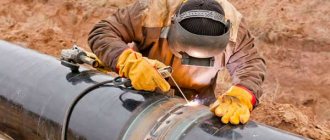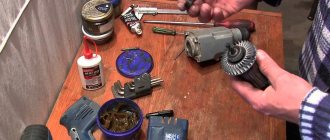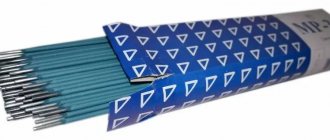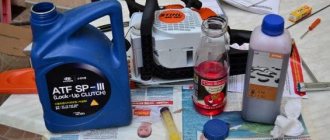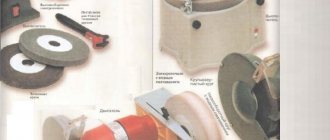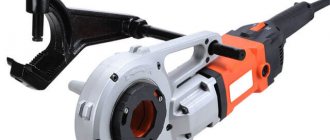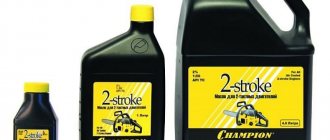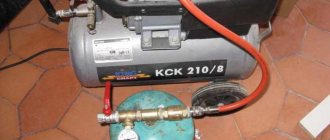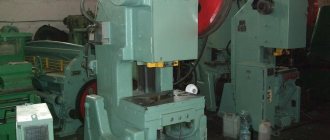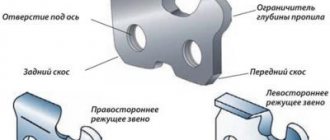The operation of metalworking equipment is impossible without the use of lubricant. Industrial and vegetable oils are used to create it.
At large enterprises, the functions of monitoring the lubrication condition of the machine fleet are assigned to repair services. On smaller ones, this is the responsibility of the machine operator. The design of the lubrication system and the features of its maintenance are outlined in the technical passport for each machine.
There are several types of lubrication system:
- automatic
- semi-automatic
- manual
Automatic centralized lubrication of components is a forced supply of oil using a pump from a special reservoir. Oil is supplied through pipelines to the units and flows, after being filtered, back into the reservoir. This way the gearbox and feed mechanisms are lubricated. Other components can be lubricated autonomously, but also automatically: oil is supplied from the oil tank, also by a pump, to another component and returned to the tank. Another type of automatic lubrication is to immerse parts in an oil bath and create an oil mist.
Semi-automatic system and automatic system can be applied simultaneously on one machine. Semi-automatic lubrication is when the machine operator himself determines which unit needs lubrication. For this purpose, the machine has index eyes. In semi-automatic mode, the guide parts of the machine are lubricated (for example, the bed and support on a lathe).
Regardless of the fact that lubrication is carried out in automatic or semi-automatic mode, the machine operator is obliged to monitor the oil level in the system, the quality of the oil, and replace it. Industrial oils with low viscosity are used to lubricate machine tools.
The main property taken into account when determining the quality of a lubricant is viscosity. Industrial oils are divided according to the ISO classification (an organization that develops standards) into 18 viscosity classes from 2 to 1500 m2/s at 40 g.
But in order to choose the right industrial oil, you need to know not only the viscosity, but also the area of application of the lubricant.
Main classifiers that determine the purpose of the lubricant
- F – spindles;
- C – gears;
- X – use of grease;
- G - sliding guides;
- M – mechanical processing;
- NN – non-inhibited mineral oil.
All surfaces (not just rubbing surfaces) should be lubricated daily at the end of the working day, after a break in work, and at the beginning of the work shift. Abrasive dust settling on the machine can damage it. Manual lubrication of running parts and bearing surfaces is used in the presence of an automatic lubrication system.
Industrial oils are intended:
- for lubrication;
- cooling;
- waste removal;
- conservation;
- seals.
Each machine model requires its own lubricant.
Lathe. Medium viscosity industrial oil is used. A consistent mixture of industrial oil and Vaseline is poured into the gearbox.
Milling machine. The lubricant is supplied to two systems simultaneously: the circulation and hydraulic systems. Circulation system lubricant – industrial lubricants with low viscosity. The hydraulic system is filled with oil of higher viscosity.
Grinding machine. Low viscosity sliding guide oils are used. It is used for both guides and hydraulic systems.
Drilling machine. Industrial oils act as a lubricant and filler for the hydraulic system.
General rules for caring for machines
Basic rules for caring for the machine before starting work:
- check the lubrication and cooling systems, the tension of the drive belts, the reliability of the tightening of the clamping elements, the serviceability of the control mechanisms, tools, auxiliary devices, protective guards, grounding and grounding devices;
- lubricate rubbing pairs that do not have a centralized oil supply;
- remove foreign objects from the work area.
Caring for the machine after the end of the shift:
- put tools, equipment, finished products and workpieces in the places designated for their storage;
- remove chips and dirt from surfaces and grooves;
- apply lubricant to the guides (the rules for caring for a lathe also include lubricating the quill, lead screw, tailstock screw, and lead roller with bearings).
Application of coolant
Coolant affects the reliability and duration of continuous operation of the grinding machine. It wets cutting and processed surfaces and also reduces heat generation. The quality of processing increases, and the tool becomes less dull and fails less often.
Additionally, the coolant performs other functions:
- effectively removes abrasive particles from the treatment area;
- cleans the pores of the wheel from dust particles and chips;
- keeps the circle in working condition longer;
- extends the intervals between wheel adjustments;
- improves ergonomics in the workplace.
Thanks to coolant, you can work with harder wheels, which expands your capabilities for processing hard materials.
Types of machine maintenance
According to GOST 18322, machine maintenance is divided into the following types:
In production, equipment maintenance is usually divided into:
- routine (cleaning and lubrication of externally accessible components and mechanisms, control of heating of rubbing parts, etc.), which is the responsibility of the machine operator;
- scheduled (cleaning and lubrication of components and mechanisms that require disassembly, changing oil and filters, adjustment, adjustment) - it is performed by the mechanic service.
Frequency and rules of maintenance, selection of oil and lubricant for metal-cutting machines
The main document defining the rules of care and frequency of maintenance is the machine passport. The points to be lubricated, the type and amount of lubricant for each of them are indicated in the lubrication card and table.
If operating conditions require changing the intervals between maintenance and/or using lubricants of other brands, the company’s chief mechanic service draws up its own maintenance cards.
Oils for metal-cutting machines must have high washing ability - small metal shavings and dust generated during the processing of workpieces accelerate the wear of rubbing pairs. Their viscosity is selected taking into account the speed of operation and the degree of load of the mechanisms.
Machine oils of the brands ZIC, Mobil, Mannol have excellent performance characteristics.
Oil coolants form a film that is difficult to remove on the surfaces of machine tools. The use of synthetic compounds reduces the time spent on equipment maintenance.
Lubricants, oil... what is their essence?
Oil-based lubricants are a substance that is applied to important metal parts of the mechanisms and components of any tool or machine, protecting them from friction. This type of product is used for the following purposes:
- protect parts from wear;
- protect from rust;
- prevent the settling of dirt and aggressive external environment;
- protect from chemical influences.
At the same time, the lubricating solution performs a cooling function. Oil is consumed the most on those parts that are subject to active loads - pistons, gears, chain drives, bearing connections. Lubricating oils are petroleum products with the addition of thickeners that affect elasticity, additives - special substances that make the material useful for equipment. For each type of tool, it is necessary to use suitable types of lubricant materials, which differ in composition, performance characteristics, chemical properties, and purpose. That is why the choice of this consumable should be taken responsibly.
Maintenance of lathes
The lubrication system of a lathe is not simple: many friction pairs operate at different loads and speeds, and therefore require the use of different lubricants and methods of supply.
What kind of oil should I pour into the lathe and what should I use to lubricate the guides? Industrial oil I-20A flows into the oil tank, I-30A into the feed box and apron, and I-12A into the spindle head. To lubricate the guides, it is recommended to use oils with anti-jump additives.
During daily maintenance of the lathe, the oil level should be checked at all sight eyes and topped up if necessary.
Hydraulic oil in a machine is nonsense or reality?
Hydraulic oil in a machine is nonsense or reality?
Post #21 ROW » June 13, 2022, 8:16 pm
Hydraulic oil in a machine is nonsense or reality?
Post #22 anker33333 » Jun 13, 2022, 9:06 pm
Of course, it’s not optimal, but we poured motor semi-synthetics into both 1i and 16k and into tool milling machines, the temperature is positive because heated workshops. and everything seems to work, perhaps in a small machine and at negative temperatures the viscosity will be too high, I don’t know. but for Stas 1k the motor should work normally at positive
Sent after 3 minutes 58 seconds:
Hydraulic oil in a machine is nonsense or reality?
Message #23 e_Vyacheslav » June 13, 2022, 21:49
A strong argument.
Sent after 4 minutes 4 seconds:
Hydraulic oil in a machine is nonsense or reality?
Post #24 Machine operator » June 13, 2022, 10:13 pm
Hydraulic oil in a machine is nonsense or reality?
Post #25 zonard » Jun 13, 2022, 11:13 pm
Specifics of maintenance of CNC machines
In addition to general care rules, daily maintenance of computer-controlled machines includes:
- thorough cleaning of the read heads;
- checking the serviceability of pneumatic and hydraulic systems, CNC devices;
- monitoring the condition of the most vulnerable parts and assemblies;
- adjusting the accuracy of operations.
During routine maintenance of CNC machines, special attention is paid to cleaning dust from the electronic and electrical parts of the equipment - dust jumpers can lead to current leaks, reducing the accuracy of its operation, and short circuits on boards.
How to lubricate a CNC machine in the absence of lubricants recommended by the equipment manufacturer is decided by the chief mechanic’s service.
The most commonly used oils for CNC machines: for lightly loaded high-speed mechanisms - I-5A, I-8A, as the speed decreases and the load increases - I-12A, I-20A, I-30A, I-40A, I-50A.
The role of ball screws
All linear motion systems and types include lubrication: ball guides, cam rollers and linear bushings, as well as direct high-precision ball screws, which are used on new types of machine tools.
Ball screws provide high positioning accuracy (6 microns, 300 mm offset). High processing speed and rotation speed of parts, the influence of shock load on the machine when cutting metal or solid wood increase the wear of these units, which leads to interconnection. The support begins to shrink, vibration occurs, which negatively affects the quality of the workpiece.
These devices are difficult to manufacture and expensive, so they are usually handled with extreme care by specialists, consuming significant quantities of lubricating oil.
Features of maintenance of other types of machines
Milling
When maintaining a vertical milling machine, you need to monitor the oil level in the circulation system and hydraulic system, and refill the oil nipples of the guide slide, table, milling head, and table lifting and moving screws two to three times a shift.
Laser
Maintenance of a laser machine consists not only of timely lubrication of rubbing pairs. In addition, you need:
- Before starting work, check whether the laser tube is completely filled with water, clean the reflectors and focusing lens from dirt, and check the optical trajectory;
- clean the linear guides and chiller every two weeks, change the water;
- If air pumping deteriorates, clean the corrugations and the hood from dust from the inside.
Bending
Gear or transmission oil with anti-corrosion additives is poured into bending machines, the viscosity of which depends on the ambient temperature. For example:
Bending machines installed outdoors require seasonal maintenance with the replacement of “summer” oil with “winter” oil or vice versa.
Before adding new oil to the bending machine, the tank and lines must be thoroughly cleaned.
Format-cutting
Maintenance of a formatting saw, like any other woodworking equipment, involves regular care of its external and internal surfaces - sawdust and dust accumulating on them are fire and explosion hazards.
When choosing what to lubricate the saw, give preference to compounds that prevent resin, dust, and shavings from adhering to the metal.
Drilling
During maintenance of the drilling machine, it is necessary to ensure that no lubricant gets on the contact surfaces of the spindle and chuck - this can lead to an accident.
Grinding
During daily maintenance of the grinding machine, it is necessary to thoroughly clean its surfaces from abrasive dust and remove sludge from the coolant settling tank, during routine maintenance, monitor the condition of the fine oil filter, and clean the tank and magnetic separator at least once every three months.
Rocking machine
Maintenance of the pumping machine is carried out twice a year in order to prepare for work in the autumn-winter and spring-summer periods, combined with scheduled repairs.
Which oils are suitable for ball screws
Of the household lubricants, divided into lithium, barium and hydrocarbons, lithium is considered the most popular due to its combination of valuable properties. Therefore, lithium fats are generally considered ideal. Of these, Litol-24 is a product that is a soft cherry or brown cream. CV joints-4 and Fiol-2U belong to this class of lubricants.
What about Ciatim-201? This multi-purpose lubricant, which retains its properties at low temperatures - up to - 60 ° C, is used in friction, sliding and rolling units. As a result, it was used in the far north.
But this lithium fat is mechanically unstable. It is better to give preference to several foreign analogues of this lubricant: BP Energrease, Mobil Mobiltemp, AeroShell Grease, Teboil 0-Grease. Domestic products include analogues - Zimol, Era, Lita, MS-70 and others.
Currently taking care of the ball screws, Molykote Multilube will be used - a multi-purpose lubricant based on mineral oil and lithium soap is used as a thickener. Its main advantages:
increased load capacity;
low oil volatility;
good resistance to oxidation;
presence of high pressure additives in components;
Lubrication units operate for a long time without repairs or additional lubricants.
The product is available in packs of 100 and 400 g, 1, 5, 20, 50 and 180 kg.
If you have read the technical documentation carefully (and you should), you can learn about the extended application range of Molykote Multilub:
machine linear bearings;
the lubricant adheres well to the spindle bearings and guides;
can lubricate various friction units;
bearings are lubricated by the electric motor and fan, gearbox (open and closed), key fittings
Another great Molykote product
Molykote (Netherlands) will also produce a 400ml Multigliss nebulizer that is convenient for the person who is CNC-machining at home. And companies with a large fleet buy 5-liter packs.
For large companies with a large number of machines in the industry, it makes sense to buy Molykote Multigliss dispersion 200 liters. Otherwise, a large package is not always available, so you must sign up for an admission notification on the site.
The product has many advantages that contribute to its widespread use:
high frost resistance;
excellent anti-corrosion properties;
ability to penetrate well;
friction and tool wear are reduced while cutting metal.
Apply rust removal dispersion. protects metal parts from corrosion, facilitates disassembly of fixed parts.
HG40 - Excellent lubrication
This water-repellent silicone lubricant treats a variety of metal, vinyl, plastic and rubber surfaces to provide reliable protection against moisture;
Effectively prevents corrosion and cracking. This is for mechanisms exposed to the environment;
Lubricant helps maintain the dielectric properties of the insulation.
Aerosol cans - the ability to accurately dose the amount of lubricant and accurately apply the composition to the surface, including: metal and plastic parts for massage; gears, chains, light load bearings; threaded connections and fasteners; rubber seals, locks, plastic linings. In addition to machines, they need snowmobiles, cars, sports equipment (boats, motorcycles: water and land, bicycles), musicians' instruments, sewing equipment, even door and window hinges. It can be used to store chrome parts if they need to be stored for a long time without being used.
HG5531 Grease Molybdenum Grease
Lubricate friction units made of pure metal, which operate under high loads and are very hot up to +160 ° C. Fine molybdenum in composition and components, withstanding high pressures, withstands up to 7000 kg / cm². It has become popular: in cars and boats; handling equipment; agricultural and household appliances; CNC machine. Molybdenum grease is used to protect ball screws and guides; hinges and other friction units; protects against rust, waterproof, inert to salts and acid precipitation. Silicone Oil Component This waterproof lubricant is made by combining a thickener and silicone oil.
The viscosity and functionality of the resulting translucent white paste will depend on the type of components and their ratios.
Silicone lubricant has many benefits.
Apply as needed: protect against corrosion and treat machine parts that must be coated in a thick layer; gives the surface water-repellent properties and is extremely slippery; formation of a protective polymer layer on the surface; preventing swelling and freezing of mechanism components; effective lubrication and long-term protection from harmful environmental influences. It is also used in everyday life: it lubricates door and window hinges, pen mechanisms, torch O-rings, seals waterproof watches, and seals rowing mechanisms. Lubrication intervals for machine parts with CNC oil.
Daily lubrication of ball screws involves three main operations: The surface working screws and machine guides are thoroughly cleaned of dust and debris. These parts and assemblies are lubricated with oil along their entire length, taking into account all moving shafts (you can use a rag or brush to apply the product, but it is better to spray or drip). The machine portal is started several times (all shafts are taken into account) so that the lubricant is distributed evenly. You can also use lubricants: TM5-18, TAD-17, gear oils marked 80W90. It is recommended to use lithium-based grease for machining the rack and ball screw nut. They are also suitable for lubrication of linear bearings. See also: CNC machine controller diagram and configuration.
ATTENTION: Experts do not recommend mixing lubricants of different compositions during daily maintenance. Twice a year, after cleaning, the cut surface and dust from ball screws and guides are cleared of old grease residues. Particular attention must be paid to the linear bearing and spindle. Using a cleaning agent, the block being treated moves completely along the axis until it stops. And only then can new lubricant be applied to the machine parts.
Capabilities of Extrusion and Lubrication Systems Extrusion is lubrication (lubrication) using a piston arm. Special lubricant for ball screws and linear bearings - Mobilux EP 2 is sold in suitable packaging - 20 g syringes. In some cases, a large syringe with a capillary tube is convenient.
Different companies have different approaches. One company mines graphite and molybdenum fat once a month. For daily maintenance they use MC-1000 DEPO bearing lubricant. Available options: Mobil-XHP222 (sold in dealerships), LGHP 2 and NLGI2. Mobil Vactra Oil (viscosity grade 32) is a high quality rail component lubricant. It is resistant to oxidation, has good filterability and maintains a stable fluid flow in the system.
Mobil series oils are used in contact with cast iron, steel and in combination with non-metallic materials. There is a special device - the lubrication system of a CNC machine, designed for central lubrication of ball screws or guides. Each lubricated unit has a long service life. Complete sets of lubrication systems - ZLPM1-S1, ZLPM2-S1 are under development. They recommend using thin oil with a viscosity of 30-46. Machine lubrication systems - you can handle any task.
Lubricant selection for guides
The best lubricant for guides is the one indicated in the equipment data sheet. If it is lost, you should choose what to lubricate the machine guides with, taking into account:
- their type;
- location in space;
- material of rubbing surfaces;
- operating temperature range.
To lubricate the horizontal sliding guides, anti-slip oils of ISO viscosity class 68 are used, and for vertical sliding guides, viscosity class 220 is used.
Which lubricant is best for rolling guides depends on the speed of operation and the degree of load - the lower the speed and the higher the load, the more viscous and dense the lubricant should be.
When deciding how to lubricate the linear guides of a machine, it is necessary to take into account the features of their design, movement speed, and specific workloads. Heavily loaded mechanisms require the use of high-viscosity extreme pressure lubricants, while high-speed ones require low-viscosity oils with improved anti-friction properties.
Mobil Vactra Oil series oils greatly facilitate the selection of lubricants for guides: they are suitable for any combination of materials of rubbing pairs.
Features of use
The larger the contact area between the grinding surfaces of the machine and the workpiece parts, the greater the volume of coolant will be consumed per unit of time. It is recommended to supply fluid to the grinding zone to the full height of the wheel, otherwise the likelihood of scratches on the workpiece increases.
Coolant for grinding machines is directed to the processing site in various ways:
- freely falling stream (irrigation method);
- through small holes in the grinding wheel;
- jet-pressure method;
- with superimposition of ultrasonic vibrations on the jet.
The first method is most widely used on universal cylindrical grinding machines. In this case, a centrifugal electric pump is used to supply the liquid, and the main task of the coolant will be to cool the workpiece. If the goal is to lubricate the grinding area, choose the second method - feeding through the pores of the grinding wheel. In this case, the liquid is directed as close as possible to its axial hole, which reduces the friction force of the circle and reduces the likelihood of cracks.
In some cases, grinding can be done without coolant. For example, lubrication is not required when machining cast iron and copper, but in their cases it is necessary to use dust extractors. Workpieces made of nickel and its alloys do not require additional cooling.
